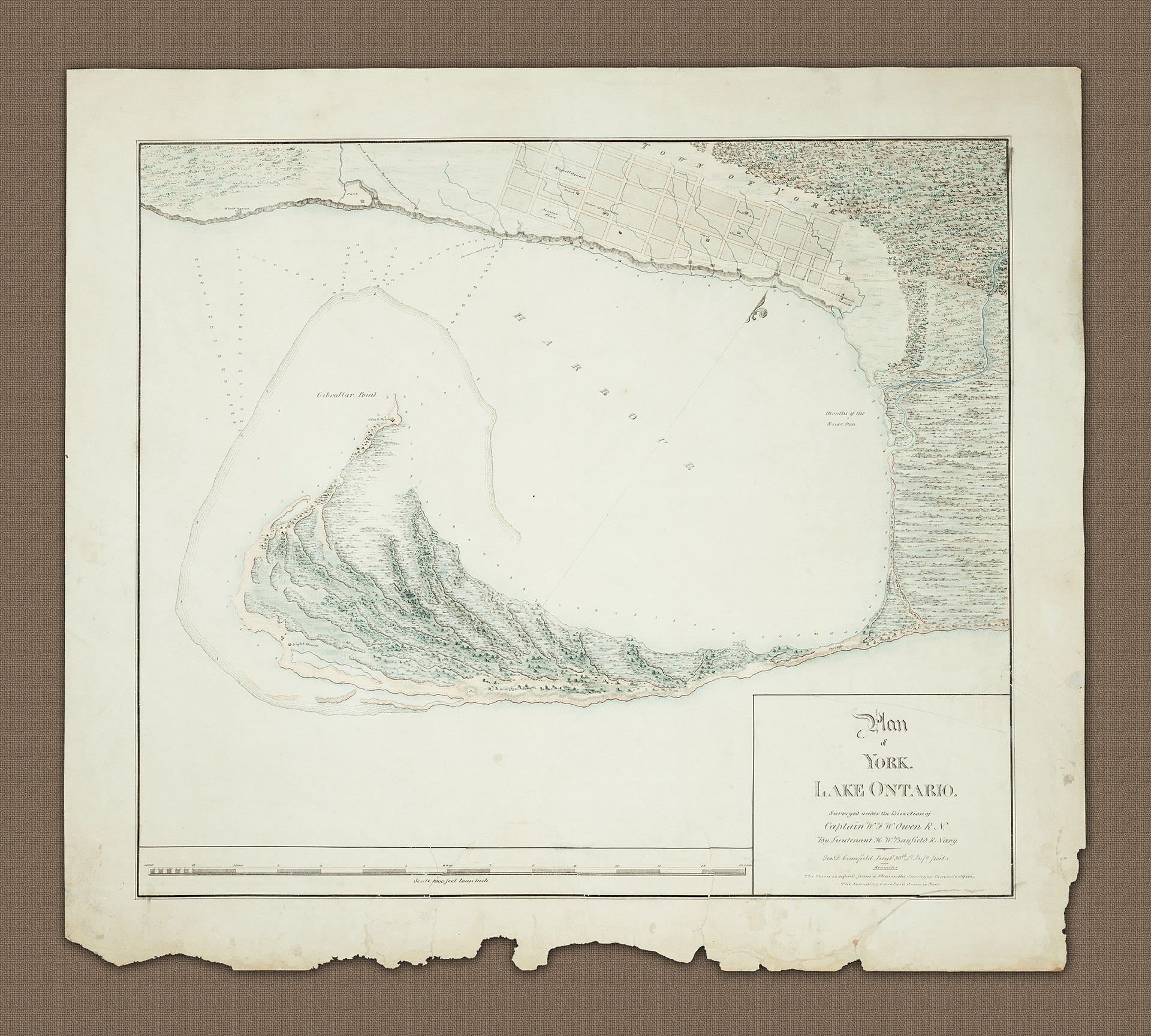York had been the Capital since John Grave Simcoe, the then Lieutenant Governor of Upper Canada had made the decision to relocate the capital from Niagra back in the late 1790s. It's location was ideal, close to the hinterland of Upper Canada with its commerce based in the timber and fur trades and land development, with a waterway system through the lakes direct to the major cities of Montreal and Ottowa.
After the war with the Americans between 1812-14, when the town had been sacked, it was by 1817 rapidly establishing an infrastructure based on a grid system which is clearly evident from Bayfield's plan. The location of York as the provincial capital was based as much on the quality of its harbor as it was on its proximity to Upper Canada. Joseph Bouchette [1] had extensively surveyed the harbor, as far back as 1794 (see Heritage Charts A508).
York's natural harbor entrance shape made it easily defendable with narrow channels. It was a natural choice for the Capital. Interestingly Bayfield puts as much, if not more detail in to his plan of the town as he does into the hydrographical information of the harbor. It is especially interesting to see his depiction of what were at the time, rivers upon which the city was built. He even includes all of the bridges. Even today, such information is extremely valuable when considering the effects underground water may have on construction. Modern day Boston is appoint in case.
He shows several buildings within the grid plan of the town: Civil Government Houses, Government House, The House of Assembly, a public school, a gaol, and a church although all of these buildings have long since disappeared from the modern day infrastructure.
Also included on Bayfield's plan of the town is the Fort to the west of the town, covering the entrance to the harbor. There are several block houses marked, including two across the harbor entrance on Gibraltar Point. Bayfield also labels the Front Road from Fort George to Burlington. His depiction of the surrounding forest, marsh and shrub land is portrayed in very much the same style as his other great works of the time, especially that of Lake Erie (see Heritage Charts A502).
[1]. Joseph Bouchette had been William FitzWilliam Owen's predecessor as Admiralty surveyor for the province.
This plan was made by Lieutenant Henry Wosley Bayfield, under the Direction of Captain W F W Owen. It was made at a time when York was establishing itself as the provincial Capital of Upper Canada. It has been the Capital since John Grave Simcoe, the then Lieutenant Governor of Upper Canada had made the decision to relocate the capital from Niagra back in the late 1790s.


